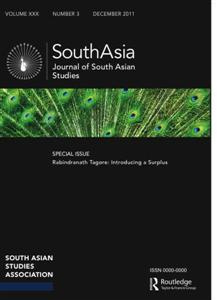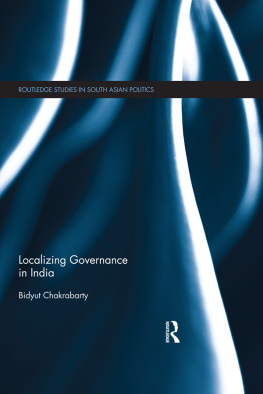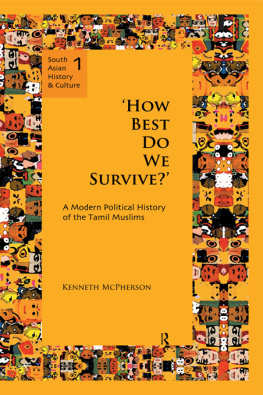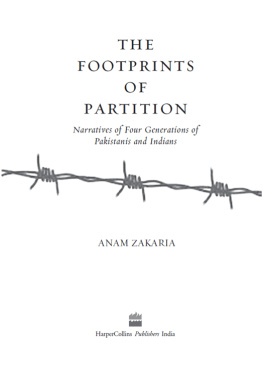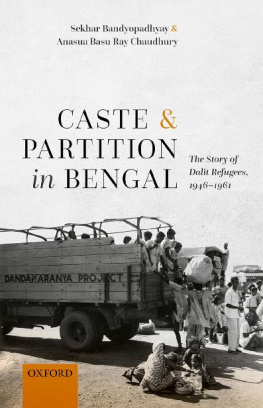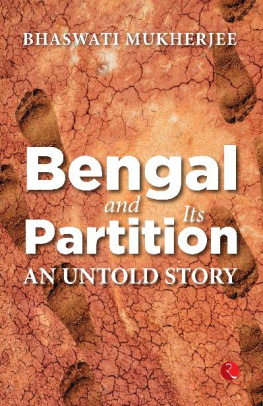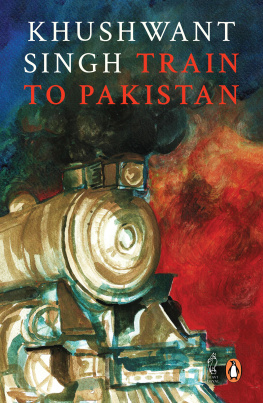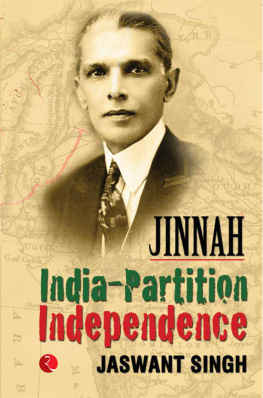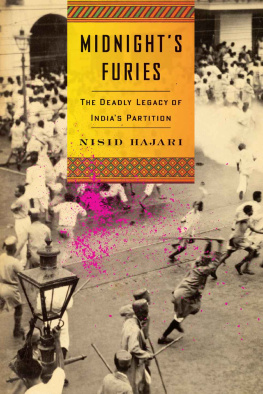Notes
1 Ahmed 1981: 186.
2 Ahmed 1981: 187.
3 Bose 1986: 231.
4 See Chakrabarty 1985.
5 A common method was to farm out jungle land and other cultivable wastes on tenurial leases to enterprising men who were to clear the land and settle the raiyats. Another way, common to east Bengal, was the sudden emergence of char (alluvial plain) as a result of a rivers change of track.
6 Chaudhuri 1967.
7 Mukherjee 1933, cited in Chatterjee 9.
8 Bhavanicharan Bandyopadhyay, Kalikata Kamalalaya (Bengali), Calcutta 1343 (Bengali Shakabda): 8-13.
9 Bagchi 1972: 280.
10 Chaudhuri 1984: 108.
11 WBSA, 51/6/1939, Report of the Dhaka Divisional Commissioner on the norent situation, 25 September 1939.
12 Chaudhuri 1984: 108-9.
13 Ahmad 1968: 53.
14 Chatterjee, P. Agrarian Relations and Politics in Bengal: some considerations in the making of the Tenancy (Amendment) Act, 1928, Occasional Paper No. 30, Centre for Studies in Social Sciences, Calcutta, 1980.
15 Jatindra Nath De, The history of the Krishak Praja Party: a study of changes in classes and inter-community relations in agrarian Bengal, 1937-47, unpublished PhD thesis, University of Delhi, 1980.
16 Ahmad 1968: 60-1.
17 Ahmad 1968: 151.
18 Sabyasachi Bhattacharya puts this point to argue that the roots of partition lay not in the public sphere but in the quotidian experience of the Hindus and Muslims in the villages. According to him, the communal division was consolidated in the manner in which members of different communities related or did not relate with one another (e.g. commensality, social entertainment and associative patterns), the tropes which were part of conventional language embedding prejudices not consciously thought of (e.g. nayray for Muslims, chanral for
Namushudras), the communal signature in language (i.e., Mussalmani Bangla), the modes of address (e.g. tui for low caste Muslims and atraf Muslims), intolerance regarding forbidden food (e.g. Muslim prejudice against pork eaten by some Hindu lower castes and tribes, and of course Hindu prejudice regarding beef), community-wise and caste-wise clustering of residence and settlements in villages and sometimes in towns, the separation of low-caste and high-caste Hindu and Muslim hostels in schools and colleges (not only in Calcutta and Dhaka but also in mofussil towns) and the day-to-day face-to-face interaction. See his The logic of fission: Bengal or Bengals (unpublished paper), p. 2.
19 Tamijuddin Khan, Memoirs, p. 35 (unpublished).
20 Ahmed 1970: 86.
21 Tamijuddin Khan, Memoirs , p. 37 (unpublished).
22 Ibid., p. 39.
23 Sen 1987: 11.
24 Sen 1987: 12.
25 Chaudhuri 1968: 225. Chaudhuri further explained that of these four modes of feeling, the first was very positive and well-organised intellectually; the rest were mere habits, not possessing very deep roots.
26 Ahmad 1978: 272-6. Abul Mansur Ahmads communalism, as Tazeen M. Murshed wrote, was largely a reaction to Hindu chauvinism which amounted what may be called Hindu separatism. In 1944, he refused to acknowledge the works of Rabindranath Tagore, Vidyasagar and Bankimchandra as representing East Bengali culture, because they did not depict the life of Bengali Muslims nor used their language (Murshid 1995: 173).
27 For details of the 1932 Communal Award, see Chapter 2.
28 Ahmad 1968: 61.
29 Nawaz 1995: 21.
30 Bose 1986: 232.
31 Chaudhuri 1968: 227.
32 Ahmed 1981: 183.
33 For a detailed study of the genesis of the growth of the Mussalmani Bangla, see De 1998: 47-77; Sarkar 1991: 189-200.
34 Born in Chittagong in 1875, Maniruzzaman Islamabadi wandered through the land. His wanderings took him to Rangpur, Calcutta, Rangoon, Lahore and different parts of Orissa and Assam. He was sometimes a school teacher, reporter or a peasant leader, and often a preacher of Islam. Educated in Hooghly Imambara, Islamabadi was one of the founders of the Bangiya Musalman Sahitya Samiti (later on Bangiya Musalman Sahitya Parishad) in 1911, and was by now well-known as a publicist on such issues as the Hindu-Muslim problem, discrimination against Muslims, the quality of education, colonialism, Islam, the destiny of Islamic civilisation, the nature of imperial power (particularly in Turkey) and the state of the Bengali language. The biographical details of Maniruzzaman Islamabadi draw upon Samaddar 2000: 448-9.
Islam Pracharak, 23 March 1904.
Islam Pracharak, 23 March 1904.
Islam Pracharak, 28 March 1904.
Bangiya Mussalman Sahitya Patriaka, 1, 1, 1325 [1911], p. 1, cited in Anisuzza-man 1969: 103.
39 Akram Khan was born in the 24 Parganas in 1868. His father, Maulana Bari Khan, was a scholar in Arabic and Persian, a follower of the ahl-e-hadis. After completing his school education in Calcutta Madrasa, he began his 70-year long career in writing and activism. He worked in several newspapers and journals in editorial and other capacities till 1910, when he was able to publish his own newspaper, the Saptahik Mohammadi. Other publications too commenced under his guidance: Dainik Jamana (1920), Saptahik O Dainik Sebak (1921), Dainik Mohammadi (1922), Masik Mohammadi (1927), Dainik Azad (1936) and Saptahik Comrade (1946). Although he was politically baptised by the Congress in the wake of the 1905-08 Swadeshi Movement, in 1936 he joined the Muslim League. As the President of the Bengal Muslim League from 1941 to 1947 he became the most determined and consistent advocate of Pakistan, and even after partition he remained a loyal champion of the League. This biography draws upon Samaddar 2000: 452-3.
Barshik Mohammadi, Vol 1(1), 1334, cited in Anisuzzaman 1969: 162.
41 Akram Khans presidential speech in the conference of the Bangiya Mus-salman Sahitya Samity, 1919, reproduced in Anisuzzaman 1969: 216.
Sahityik , 1, 9, Sravana, 1334 (Bengali Shakabda).
43 Ibid.
Islam Darshan, 2, 8, Agrahayan, 1328 (Bengali Shakabda).
Sahityik , 1, 9, Sravana, 1334 (Bengali Shakabda).
46 Habibur Rahaman on the Mussalmani Bengali, Islam Darshan, 2, 8, Agra-hayan, 1328 (Bengali Shakabda).
47 Such as Syed Nawab Ali Chowdhury, Shahidulla, Akram Khan, Lutfar Rahman, Abdur Razzaq, Anwar Hussain, Muztaba Ali, Abul Mazid, Abul Hakim, Rezaul Karim, Abul Kalam Shamsuddin. Most of these authors expressed their views in support of Habibur Rahman in their individual writings, published in the Masik Mohmmadi or Saogat or Islam Darshan.
48 Abul Kalam Shamsuddin, Sahitye Sampradayikata, Islam Darshan, 3, 1, Aswin, 1329 (Bengali Shakabda).
The Star of India, 5 August 1926, and The Mussalman, 7 August 1926.
Amrita Bazar Patrika, 2 August 1926.
The Mussalman , 23 October 1932.
The Star of India, 6 February 1936.
The Star of India , 6 February 1926.
54 Anisuzzaman 1969: 110.
55 Abul Karims presidential address to the reception committee of the Bangiya Mussalman Samity in Bangiya Mussalman Sahitya Patrika , 1, 1, Baisakh, 1325 (Bengali Shakabda).
The Saogat , 4, 2, Sravana, 1353 (Bengali Shakabda).
Bangiya Mussalman Sahitya Patrika, 1, 4, Magh, 1325 (Bengali Shakabda).
58 Critical of the efforts of these Muslim writers, the top Bengali intellectuals like Rabindranath Tagore, Ramesh Chandra Bandyopadhya (in Probashi) and Sajani Kanto Das (in Sanibarer Chhithi) warned of the adverse consequences if Mussalmani Bangla was allowed to strike roots. Although Tagore was not in favour of rejecting altogether the Arabic and Persian words in Bengali, he was however very disturbed by the design of these Moulvi Sahebs who by seeking to flaunt their communal identity [would] not only in the long run spell disaster for the Bengali language and literature but also drive a wedge between Hindu-Muslim communal harmony. Probashi, 32, 5, Bhadra, 1339, p. 602.
Next page

